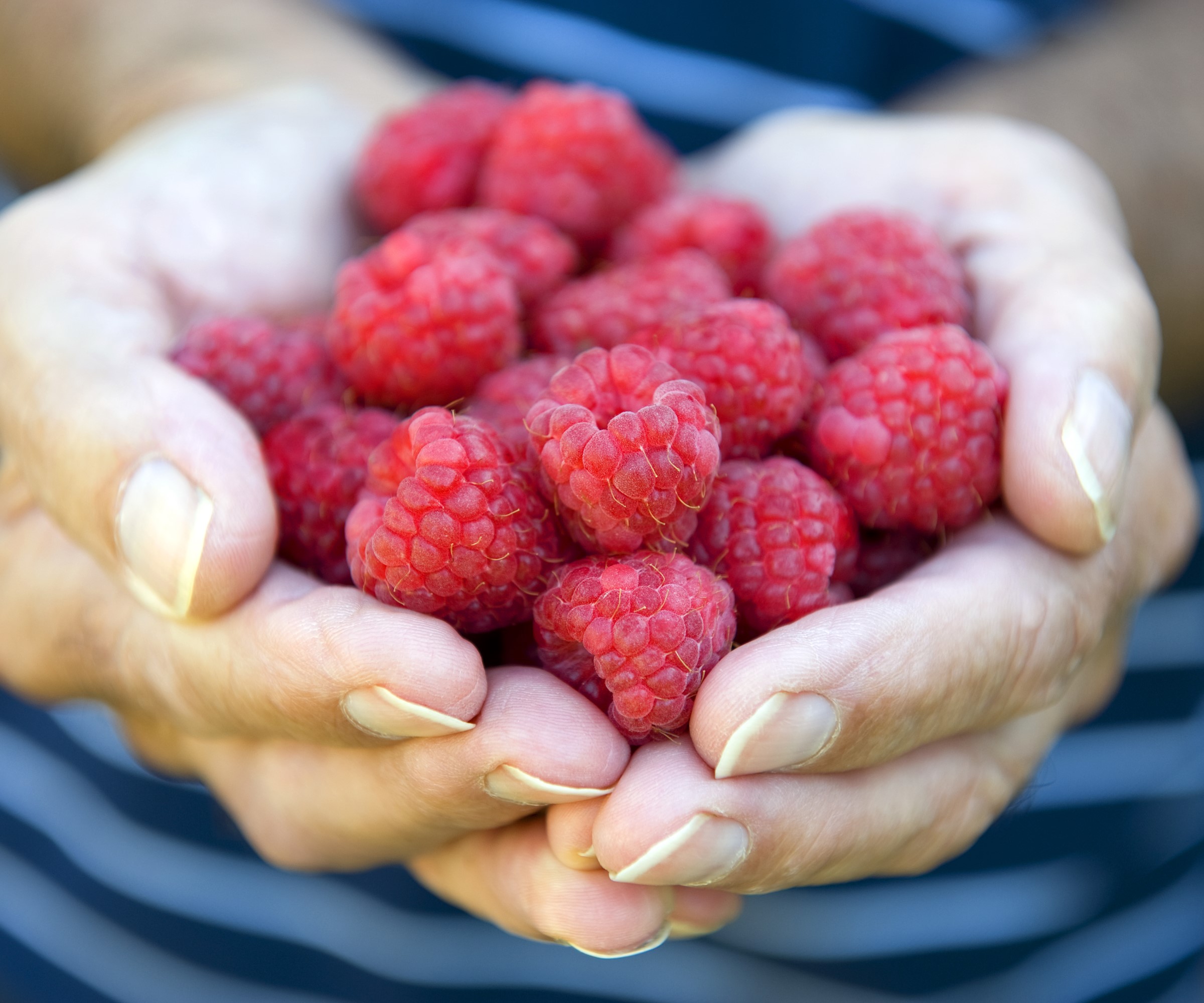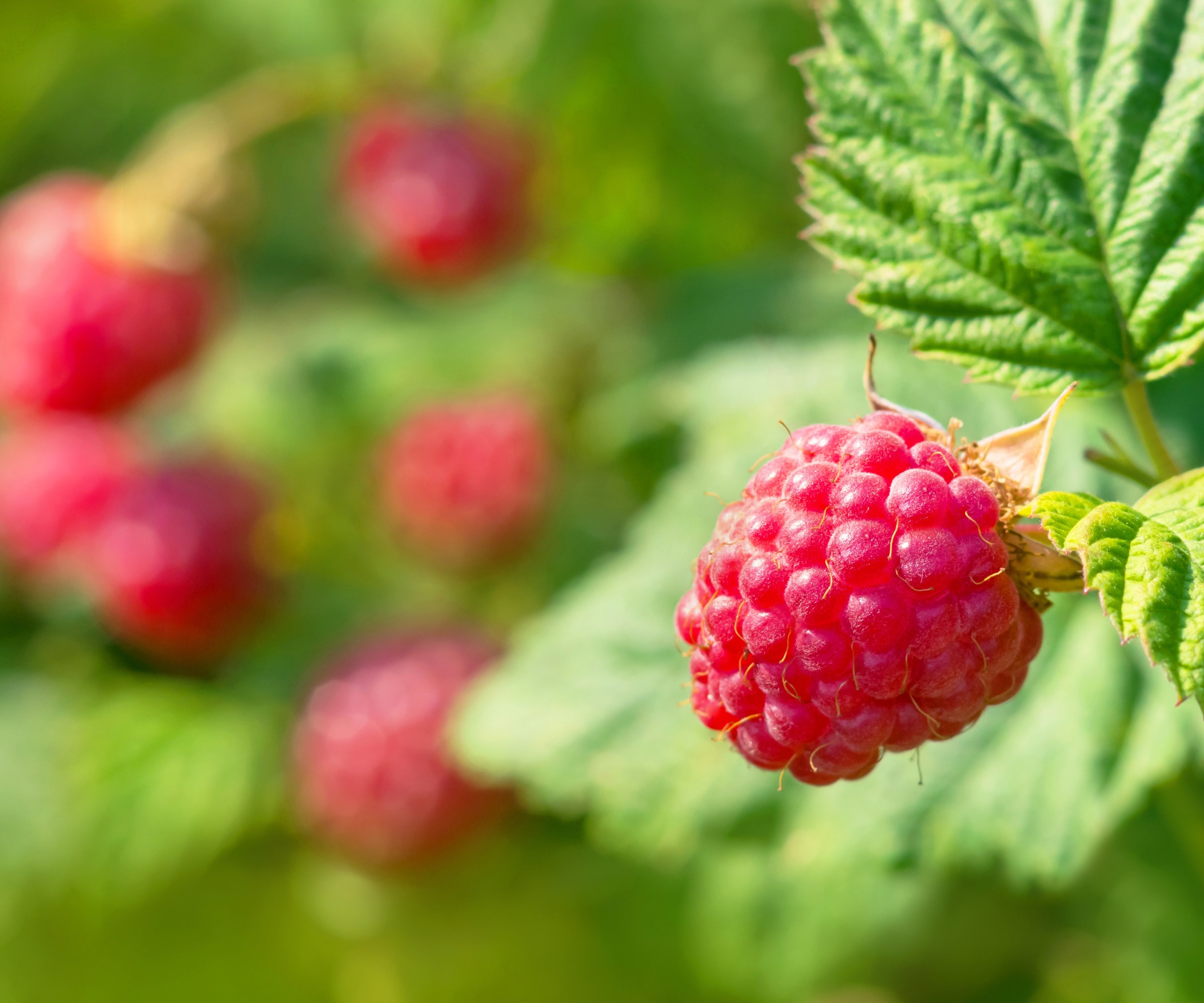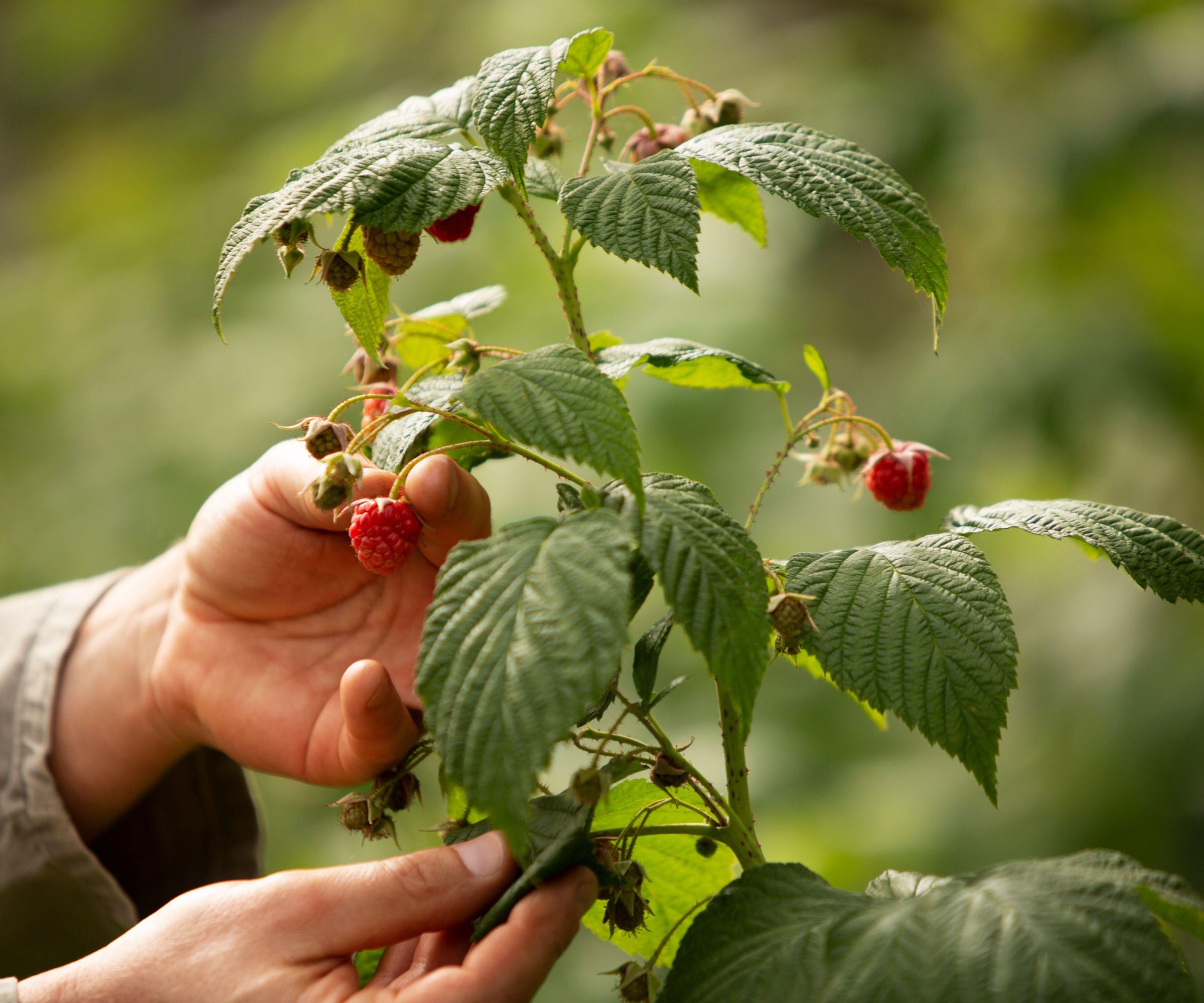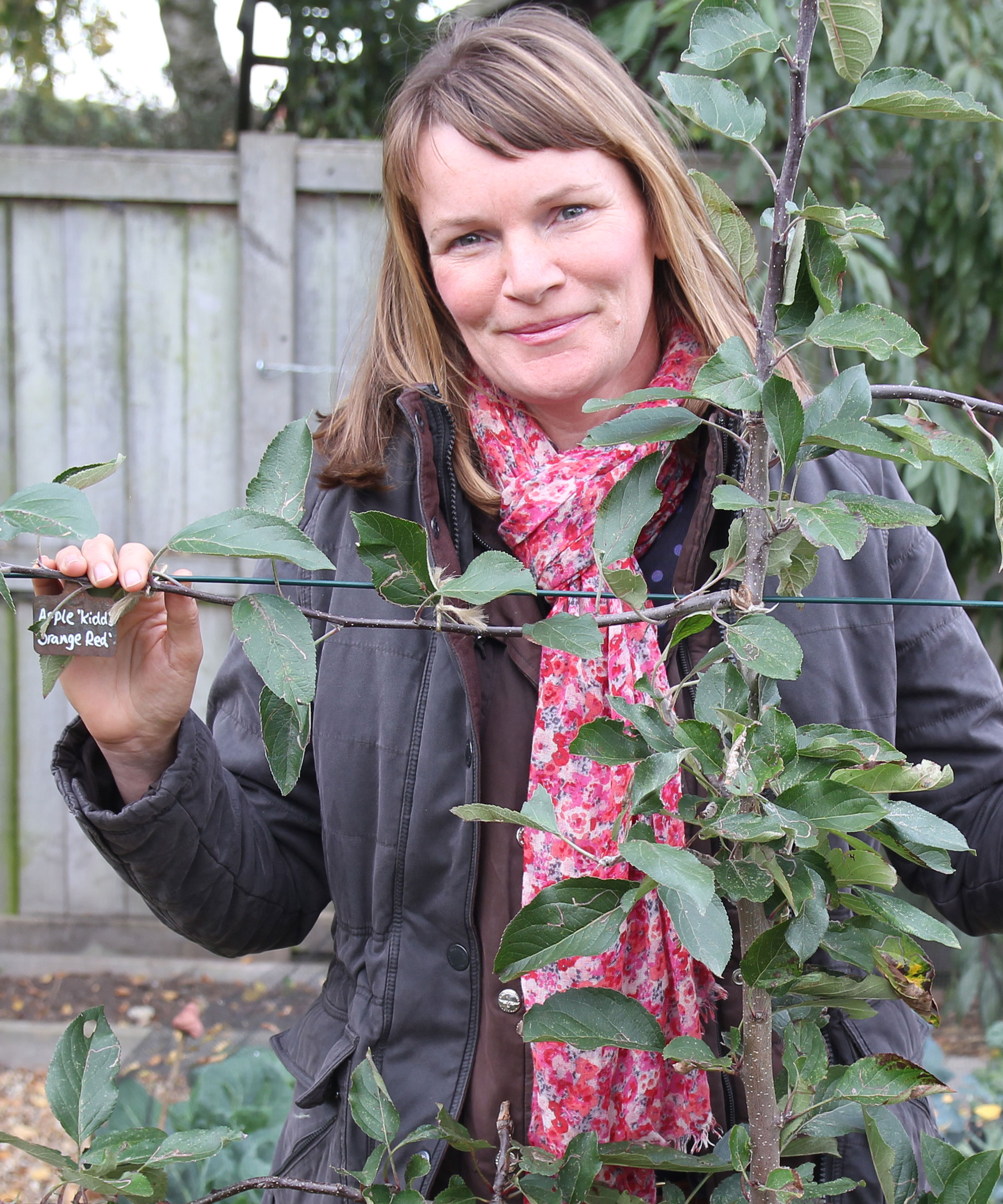How to grow raspberries in pots – expert tips on using this simple method to get delicious fruits
Raspberries can be successfully grown in containers for a bumper crop of berries in summer or fall


Raspberries are a crop usually thought to require a lot of space, however they are a fruit that can be grown successfully in pots. All types of raspberries are suited to pots, though it is best to choose shorter-growing canes or the modern compact varieties. I had a dwarf ‘Ruby Beauty’ raspberry in a pot that was really low-maintenance and provided me with fruit for several years – I gifted it to my sister and it is still cropping for her.
You do not need lots of raspberry canes to feed a household and, for a small outlay for a handful of bare root raspberry canes in fall, you can get fruits for at least three years. The only potential drawback is they do need a large pot in which to grow and will require regular watering while the canes are forming fruits.
If you want to know how to grow raspberries in pots, the answer is it is a simple and practical way to get delicious homegrown fruits even without the luxury of needing lots of outdoor space to do it in.

Growing raspberries in pots can provide a good harvest without a glut of fruit to deal with
Tips for growing raspberries in containers
Raspberry canes are normally seen growing in long rows in a kitchen garden or on an allotment or homestead. Not everyone is fortunate enough to have that opportunity and may want to get delicious fruit in their small backyard or small vegetable garden.
That is where growing raspberries in a pot comes to its fore, it is a simple way to grow and allows anyone with little space or soil to enjoy the luxury of raspberries. Container gardening also offers the advantage that you can control the soil you put the plants in and place the pots in the sunniest corner of the yard to help them succeed.
The one downside to growing raspberries in containers is that the plants are not all suited to long-term growing in containers. It is recommended that raspberries in pots have a lifespan of around three or four years, after which they can be planted in the ground in your vegetable garden and will grow happily for many years. The new compact dwarf raspberry varieties do have a longer lifespan in pots than other types.
- Buy raspberry plants and bare root canes from Nature Hills
- Buy raspberry plants and bare root canes from Burpee

All types of raspberries, including red, yellow, and black types, are suitable for pots
How to grow raspberries in a pot
Raspberries come in summer-fruiting and fall-fruiting varieties. The summer types crop from mid-to-late summer and fall varieties from late summer to mid-fall. Both types are suitable for growing in pots.
Design expertise in your inbox – from inspiring decorating ideas and beautiful celebrity homes to practical gardening advice and shopping round-ups.
There are types of raspberry canes now bred specifically to be dwarf varieties that are ideal for planting in pots in a small garden or patio.
The canes are often sold bare-root by specialist nurseries and are available from fall to early spring, which is the plant’s dormant season. The best time to plant raspberries in pots is in late fall, though you can also plant the canes in winter and early spring. If you already have some canes elsewhere, you can even take cuttings of these and transplant raspberries into pots.
Follow these nine steps for successfully growing raspberries in pots:
- Raspberry canes need to be planted in a sizable container, one that is at least 12-24 inches in diameter. It is essential that any container has adequate drainage holes in it. It is recommended to plant up to three canes in a 12 inch diameter pot, while you can get six canes in a 24 inch diameter container.
- Fill your chosen pot with a soil-based compost – such as the Miracle-Gro Potting Mix available at Amazon – with some added grit to provide good drainage, and mix in some slow-release balanced fertilizer.
- Make a hole for the raspberry canes and push them 2-3 inches into the soil and gently press the soil around the roots. Raspberry plants can also be bought in pots and should be planted at the same depth as in the pot it came in.
- Water the canes or plants well and check regularly to ensure the compost does not dry out.
- Place the pots in a sunny spot in the yard. While raspberries can tolerate shade they will be happiest in the sunniest spot you can give them.
- Feed the raspberry canes monthly during the growing season with a liquid-based fertilizer that is high in potassium.
- Raspberries grown in pots benefit from being covered with a cage or netting once the fruit starts to ripen, this protects the fruit from being eaten by birds.
- At the end of the season comes the time for pruning raspberries. It is important to know when to prune raspberries, as different types are cut at different times. For summer-fruiting types prune the fruited canes to the base after they have been harvested and keep the strongest unfruited stems that will carry next year’s fruit. Cut all fall-fruiting raspberries canes down in late winter.
- In the spring, feed the plants with a balanced fertilizer and top with some homemade compost.
Steve Bradley, gardening expert for Homes & Gardens, claims that, where space is limited, he has seen success putting more canes together in a pot. He says: ‘We have found that six canes arranged around the sides of a container 14 inches across and 11 inches deep with 21 litres of compost grow well.'

Steve has written (or co-written) over 40 practical gardening books, and was commissioned to update some of the world’s best-selling gardening books, The Expert series, originally written by Dr David Hessayon.
Over the years, Steve has also written for most of the popular UK gardening magazines, including Amateur Gardening. He is a member of The Garden Media Guild and has a vast knowledge of gardening and enjoys sharing it with listeners to BBC local radio. He is a resident gardening expert, answering listeners’ questions during live gardening phone-in shows.

Fruits benefit from protection to keep birds away from them
Best raspberries to grow in a container
All varieties of raspberries are suitable to grow in containers, however it is best to go for shorter and more compact types as these are less likely to be impacted by strong winds. Great options for pots include Malling Jewel, which is a robust and low-growing summer fruiting type, and Autumn Bliss, a fall-fruiting type which grows shorter than most and sturdy enough to need little support. You can get Autumn Bliss Raspberry Plants at Nature Hills.
As previously mentioned, there are new dwarf varieties that have recently been introduced and can now be found online and in retailers. Lucy Chamberlain, fruit and vegetable expert for Homes & Gardens, says that these compact varieties are ‘ideal for containers’. She adds: ‘The first to be sold was ‘Ruby Beauty’ (which boasts thornless stems). You can now also find ‘Little Sweet Sister’,’ Little Red Princess’ and yellow-fruited ‘Goodasgold’.

Lucy was a Horticultural Advisor at RHS Wisley and has been Head Gardener on a 100-acre estate in England for many years, but writes regularly for titles such as The Garden, Gardeners’ World, The Guardian and Amateur Gardening. She’s also the author of RHS Step by Step Veg Patch, available from Amazon, which covers 50 types of fruit and veg.
FAQs
Can raspberries survive winter in pots?
Raspberries are hardy plants and survive in the ground over winter without any protection. In pots, however, they can be more vulnerable and could benefit from additional protection from extreme winter weather. This can come in the form of a layer of mulch or by wrapping pots in fleece or bubble wrap.
Pots can also be moved to a more protected spot, such as under a porch, unheated garage, or shed, or by a wall to protect it from freezing winds. Plants can be moved back to a warmer spot in spring to help bring them out of dormancy.
How often do you water raspberries in pots?
Raspberries want the soil to be moist, but not overly wet, and that is especially the case when fruits are forming. Raspberry plants in containers do need more water than crops in the ground and regular monitoring is essential.
Raspberries in pots may need watering two or three times a week, but that can increase to a daily watering in particularly hot and dry spells if fruits are forming. The frequency of watering will depend on the size of container, location, and climate. Smaller pots will need more watering and plants in terracotta pots will dry out quicker than other materials, such as plastic or glazed ceramic pots.
As you will have discovered, not only can you successfully grow raspberries in a container, but it offers a wealth of advantages. The plants are simple to grow and require only a small amount of upkeep. Another upside of growing fruit in pots is you can have delicious fruits to use in baking, desserts, jams, or for any other culinary uses.
As mentioned at the start, the ‘Ruby Beauty’ raspberry I once owned is now still fruiting some five years later and such a compact form offers a fantastic opportunity to try growing raspberries in a pot.

Drew has worked as a writer since 2008 and was also a professional gardener for many years. As a trained horticulturist, he worked in prestigious historic gardens, including Hanbury Hall and the world-famous Hidcote Manor Garden. He also spent time as a specialist kitchen gardener at Soho Farmhouse and Netherby Hall, where he grew vegetables, fruit, herbs, and cut flowers for restaurants. Drew has written for numerous print and online publications and is an allotment holder and garden blogger. He is shortlisted for the Digital Gardening Writer of the Year at the 2025 Garden Media Guild Awards.